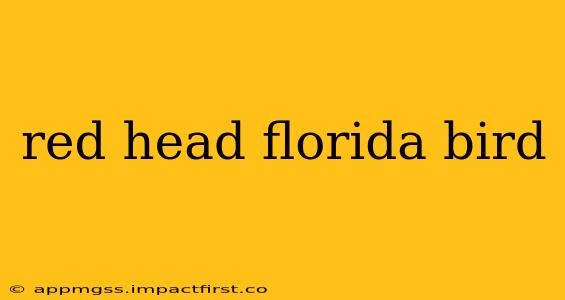Florida's diverse ecosystems boast a vibrant array of birdlife, and among them, the red-headed woodpecker stands out as a striking and captivating species. With its bold crimson head, stark black and white markings, and powerful physique, this woodpecker is a true spectacle for any birdwatcher. This comprehensive guide delves into the fascinating world of the red-headed woodpecker in Florida, covering its habitat, behavior, diet, and conservation status.
What is a Red-Headed Woodpecker?
The red-headed woodpecker (Melanerpes erythrocephalus) is easily recognizable by its entirely crimson head, a stark contrast to its pure white face and neck. Its back and wings are glossy black, while its underparts are a creamy white, often with a slight hint of buff. Males and females exhibit nearly identical plumage. These medium-sized woodpeckers are known for their acrobatic abilities, often clinging upside down to tree branches while foraging. They are also remarkably adaptable and resourceful birds.
Where do Red-Headed Woodpeckers Live in Florida?
Red-headed woodpeckers in Florida can be found across a variety of habitats, but they exhibit a preference for open woodlands, savannas, and areas with scattered trees and deadwood. They are particularly drawn to areas with mature oak trees, as these provide crucial nesting cavities and foraging opportunities. You're less likely to find them in dense, closed-canopy forests. While they are present throughout the state, their populations are more concentrated in certain regions.
What do Red-Headed Woodpeckers Eat?
What is the diet of a Red-Headed Woodpecker?
Red-headed woodpeckers are highly opportunistic feeders, consuming a varied diet that includes insects, nuts, fruits, and even small vertebrates. Their diet varies seasonally, adapting to the availability of food sources. Insects form a significant portion of their diet, including beetles, ants, and wasps. They also readily consume acorns, berries, and other fruits. Their remarkable ability to catch insects mid-air is a testament to their hunting prowess.
Are Red-Headed Woodpeckers Endangered in Florida?
While not currently classified as endangered in Florida, the red-headed woodpecker population has experienced fluctuations and declines in parts of its range. Habitat loss due to deforestation and urbanization poses a significant threat. Competition with other woodpecker species for nesting sites and food resources can also impact their populations. Conservation efforts focused on habitat preservation and restoration are crucial for ensuring the long-term survival of this captivating species in Florida.
How can I Attract Red-Headed Woodpeckers to My Yard?
How can I attract Red-Headed Woodpeckers to my backyard?
Creating a welcoming environment in your backyard can attract red-headed woodpeckers. Planting native oak trees provides both food and nesting sites. Providing a source of water, such as a bird bath, is also beneficial. Leaving some dead trees or branches standing can offer nesting cavities and foraging opportunities. Avoid using pesticides that could harm insects which form a crucial part of their diet.
What are the Key Differences between Red-Headed and Pileated Woodpeckers?
What's the difference between a red-headed and a pileated woodpecker?
While both are impressive woodpeckers, they are easily distinguishable. The pileated woodpecker is considerably larger, with a much bolder black and white plumage, a prominent red crest, and a distinctive black "mustache." The red-headed woodpecker's smaller size, entirely red head, and unique black and white pattern makes it distinct from its larger cousin.
What are some common threats to Red-Headed Woodpeckers?
What are the biggest threats to red-headed woodpeckers?
The major threats include habitat loss, which fragments their preferred open woodland environments, and competition from other woodpecker species. Pesticide use can deplete their insect food sources. Climate change also plays a role, impacting food availability and habitat suitability.
By understanding the ecology and challenges faced by the red-headed woodpecker, we can contribute to their conservation and ensure that this stunning bird continues to grace Florida's landscapes for generations to come. Their vibrant presence adds a splash of fiery beauty to Florida's natural world.
